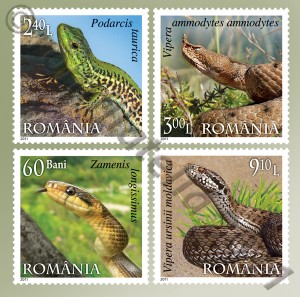 Joining the UN and UNESCO Programs and Projects and also many global organisations from which the World Wildlife Fund (WWF) stands out, Romfilatelia continues its mission to foster love and care for the environment, and, in the future, will introduce into circulation postage stamps issues related to this topic. Joining the UN and UNESCO Programs and Projects and also many global organisations from which the World Wildlife Fund (WWF) stands out, Romfilatelia continues its mission to foster love and care for the environment, and, in the future, will introduce into circulation postage stamps issues related to this topic.
Joining the UN and UNESCO Programs and Projects and also many global organisations from which the World Wildlife Fund (WWF) stands out, Romfilatelia continues its mission to foster love and care for the environment, and, in the future, will introduce into circulation postage stamps issues related to this topic. Joining the UN and UNESCO Programs and Projects and also many global organisations from which the World Wildlife Fund (WWF) stands out, Romfilatelia continues its mission to foster love and care for the environment, and, in the future, will introduce into circulation postage stamps issues related to this topic.
The first postage stamps issue which Romfilatelia introduces into circulation in 2011, “Reptiles of Romania”, is related to the environmental protection and to the biodiversity preservation. It is part of a series of postage stamps issues dedicated to this theme of reptile fauna.
On the postage stamps of the issue are illustrated the following reptile species belonging to the Romanian fauna: the Aesculapian snake, the Balkan wall lizard, the horned viper and the Moldavian meadow viper.
The Aesculapian snake (Zamenis longissimus) illustrated on the postage stamp with the face value of RON 0.60, has a slender body, with a small and narrow head. The tail is long and thin and the length of this snake is 1.50-2 m.
As regards the habitat, it can be located in the Southern and Central Europe, in Asia Minor and in Northern Iran.
The Balkan wall lizard (Podarcis taurica) is illustrated on the postage stamp with the face value of RON 2.40. It is small, the head, together with the body length of the male being 77 mm long and the female 66 mm long. Its body is slightly flattened, has a small head and the tail is 1.5 times longer than the body and is very thin towards the end. The colour is dark brown, sometimes olive brown or greenish on the dorsal side and white, with reddish reflexes on the abdomen. It lives in sandy areas, on sand dunes and in rocky places. It feeds on larvae and adult insects, spiders and other arthropods. It can be found in the Southern Crimea, Romania, Hungary, Bulgaria, Serbia, in the North-East of Greece and in the European part of Turkey.
The horned viper (Vipera ammodytes ammodytes) illustrated on the postage stamp with the face value of RON 3.00, lengths range between 80 and 95 cm. One main feature of this species is the horn on the top of the snout, consisting of 2-4 scales and the dark zigzag on the back. The venom is very toxic. It prefers the sunny areas, with scarce vegetation. It feeds on small rodents and lizards. Usually, it can be found in Eastern Europe where, like in Romania, it has been a protected species since 2001.
The Moldavian meadow viper (Vipera ursinii moldavica) illustrated on the postage stamp with the face value of RON 9.10, has an approximate length of 65 cm and is less poisonous. Generally, its colour is grey and the zigzag pattern on the back is dark brown. It can be found in Delta area, in sandy and arid places and also in the Iasi County. The viper from this area is considered a distinct subspecies. It is protected throughout the European Union.
We thank Mr. Dumitru Murariu, manager of the “Grigore Antipa” National Museum of Natural History for the documentary support granted in accomplishing this postage stamp issue and to Mr. Alexandru Strugariu and Victor Bortas, whose photos were used for illustrating the products of the issue.
Issue date: 2011-01-19



